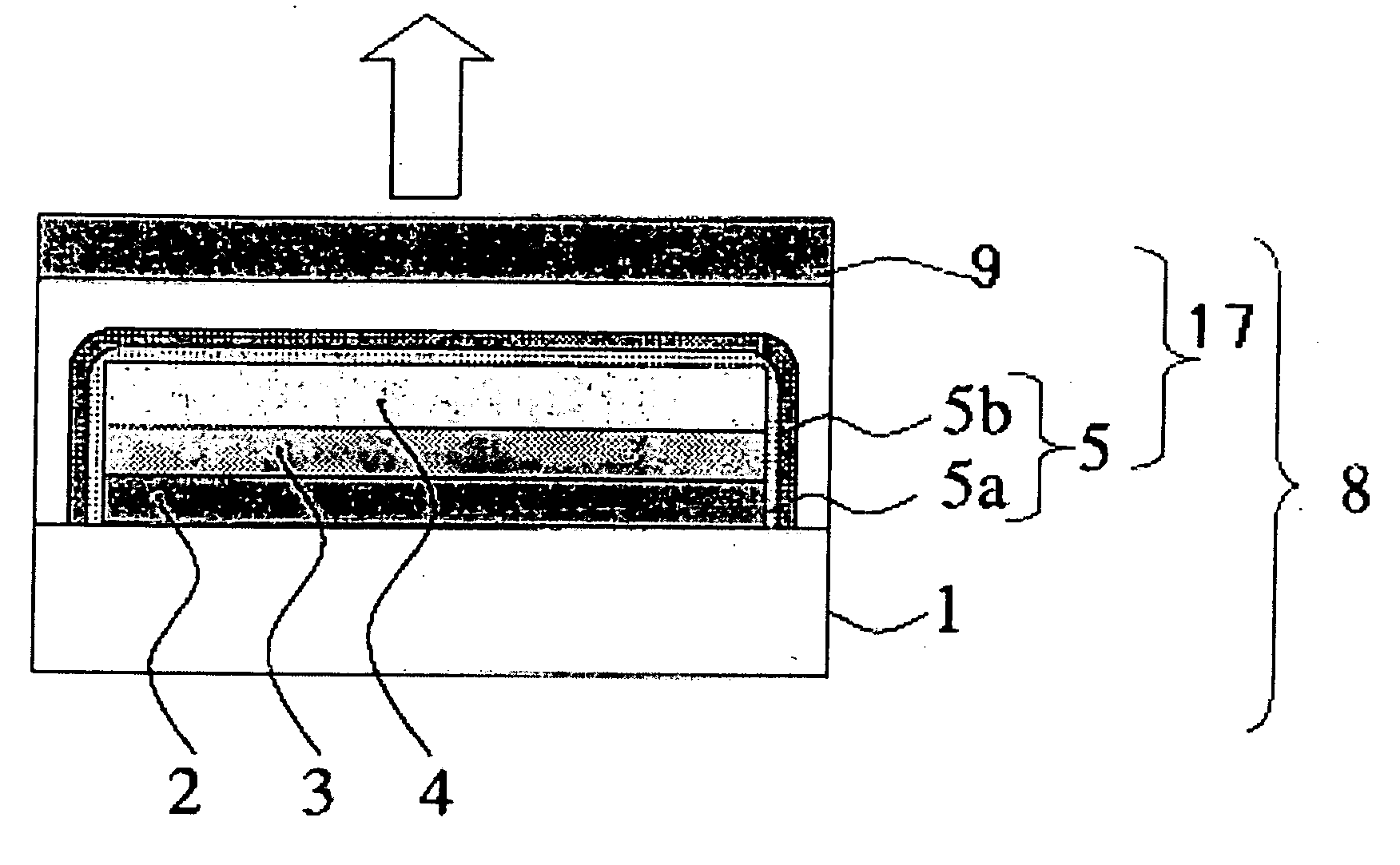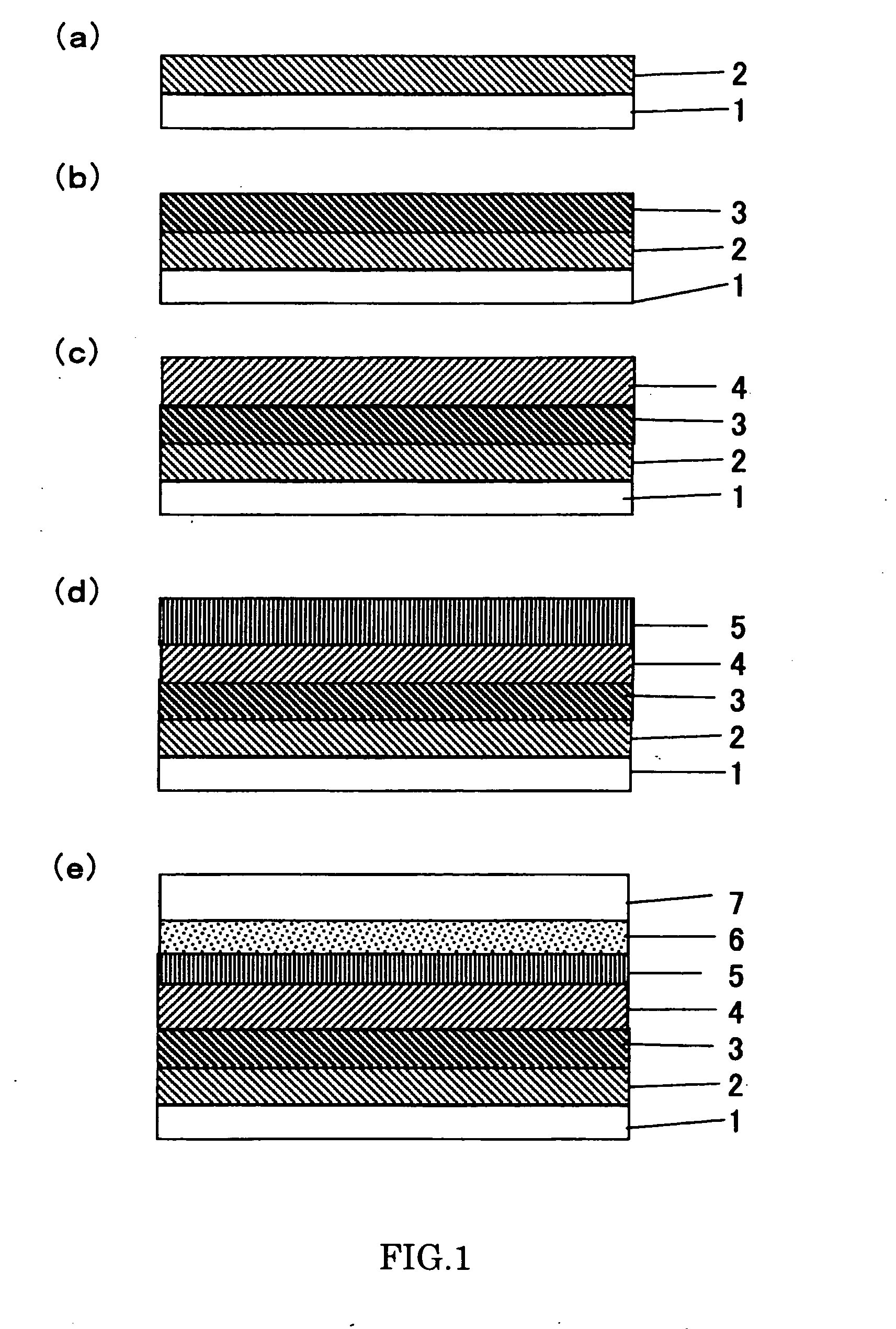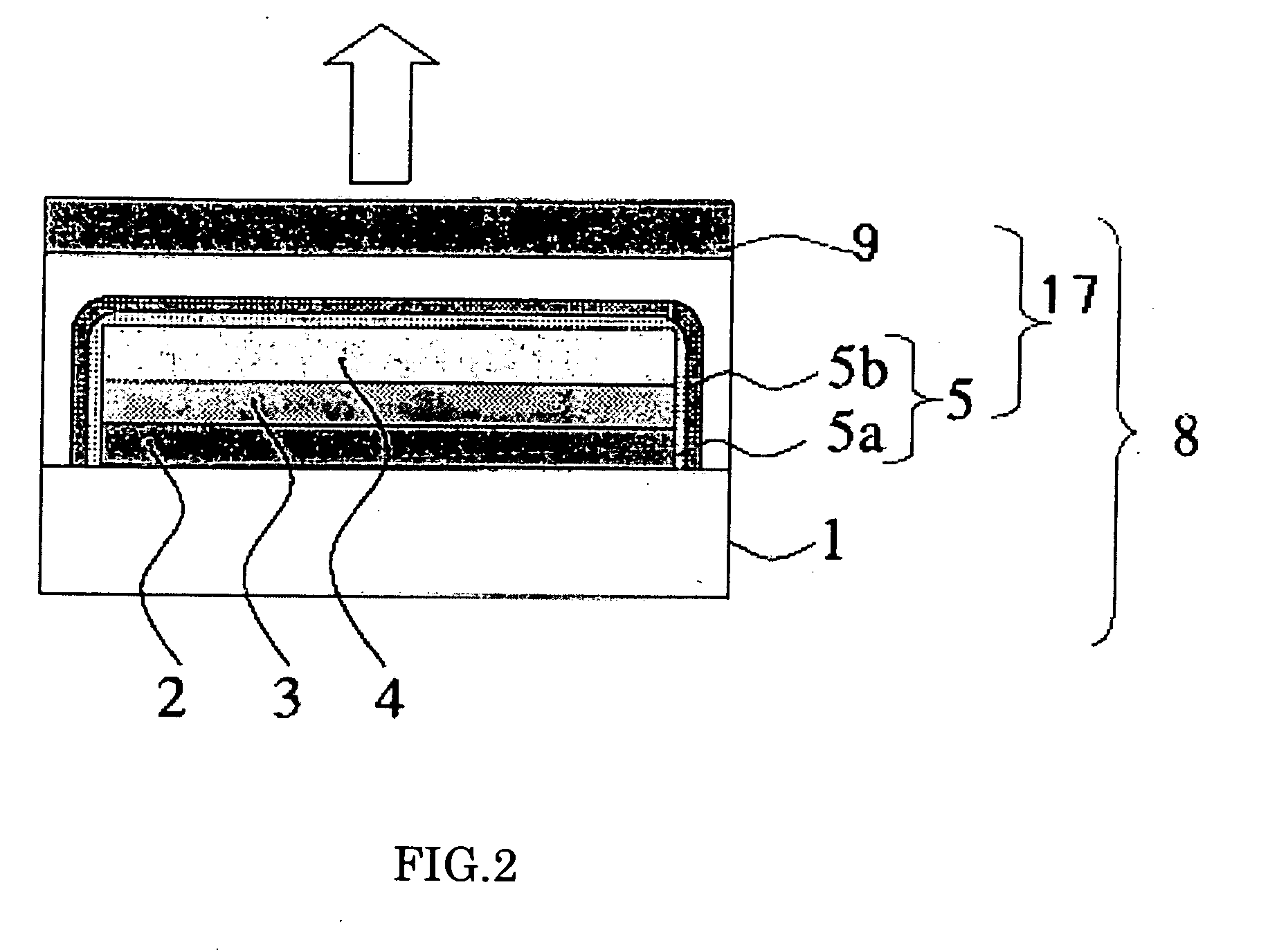Organic electroluminescent element and the manufacturing method
a technology of electroluminescent elements and manufacturing methods, applied in the direction of discharge tubes/lamp details, discharge tubes luminescnet screens, electric discharge lamps, etc., can solve the problems of film defects that cannot be suppressed, quality deterioration, and film defects that cannot be hidden
- Summary
- Abstract
- Description
- Claims
- Application Information
AI Technical Summary
Problems solved by technology
Method used
Image
Examples
first embodiment
Barrier film (The First Embodiment)
[0102]The following barrier film can be used: Metallic oxide such as silicon dioxide or aluminium oxide; Metal fluoride such as aluminum fluoride or magnesium fluoride; Metal nitrides such as silicon nitride or aluminum nitride; Metal oxynitride such as silicon oxide nitride; and Metal carbide such as silicon carbide.
[0103]Especially it is preferable to use silicon nitride, silicon dioxide and silicon oxynitride which are superior in barrier properties. Especially silicon nitride is preferable from the viewpoint of barrier property.
[0104]In addition, as for silicon nitride, silicon dioxide and silicon oxynitride, depending on the kind of a film formation method, hydrogen and carbon may be included in a film. However, these barrier films can be used if necessary.
[0105]According to a material of a barrier film, the following formation method of a barrier film can be used: Resistance heating evaporation method, electron-beam evaporation method, reacti...
second embodiment
Barrier Film (The Second Embodiment)
[0128]For barrier film 5, easily oxidative silicon nitride film 5b and water-vapor-proofing silicon nitride film 5a are used. Balancing high barrier property and transparency is possible by using a silicon nitride film as a main film of barrier film 5. Therefore, light can be taken out from sealing substrate 9 side.
[0129]In addition, sputtering, photo-assisted CVD and plasma enhanced CVD can be used for film production technique.
[0130]Plasma enhanced CVD is the most desirable in this application. In plasma enhanced CVD technique, all the reaction generating film-forming seed takes place in gas phase. Therefore, it is not necessary for a reaction to be caused in a substrate surface. Therefore, plasma enhanced CVD is most suitable for low temperature film forming method needed in this application. Besides, a thin film can be formed in various conditions by controlling a gaseous flow rate, temperature of a substrate, gas pressure in a film production...
example 1
[0152]Glass was used for substrate 1. The ITO film of which thickness was 150 nm was formed on substrate 1 as a first electrode by a sputtering method. Patterning of ITO film was performed using photo-lithography etching method.
[0153]Organic luminescent medium layer 3 was made next. A mixture of poly (3,4-ethylenedioxy thiophen) and polystyrene sulfonate was used as a hole transport layer (thickness: 20 nm). Poly [2-methoxy-5-(2′-ethyl-hexyloxy)-1,4-phenylenevinylene] (MEHPPV) was used as an organic luminescent layer(thickness: 100 nm). Each layer was formed by a spin coat method.
[0154]As a second electrode, Ca film (5 nm) and Al film (100 nm) were formed by evaporation method next.
[0155]Barrier film was layered using plasma enhanced CVD technique next. After having layered a low density silicon nitride film (2.3 g / cm3) of which thickness was 200 nm, a normal density barrier film (2.8 g / cm3) of which thickness was 200 nm was layered.
[0156]The obtained organic electroluminescent elem...
PUM
 Login to View More
Login to View More Abstract
Description
Claims
Application Information
 Login to View More
Login to View More - R&D
- Intellectual Property
- Life Sciences
- Materials
- Tech Scout
- Unparalleled Data Quality
- Higher Quality Content
- 60% Fewer Hallucinations
Browse by: Latest US Patents, China's latest patents, Technical Efficacy Thesaurus, Application Domain, Technology Topic, Popular Technical Reports.
© 2025 PatSnap. All rights reserved.Legal|Privacy policy|Modern Slavery Act Transparency Statement|Sitemap|About US| Contact US: help@patsnap.com



